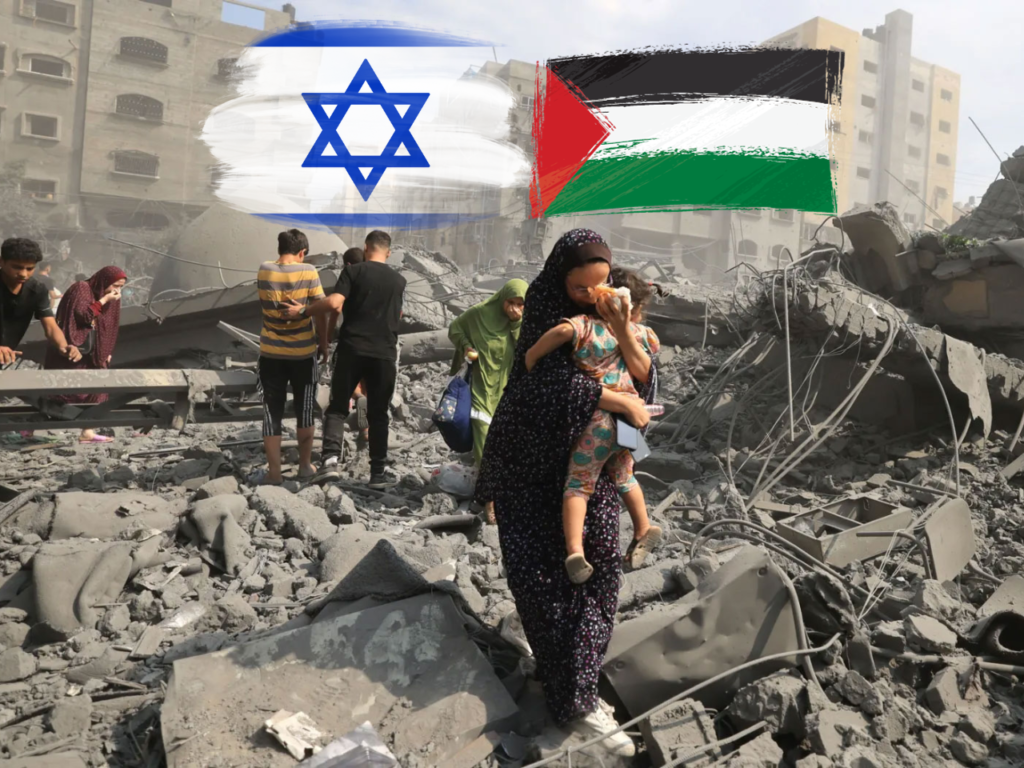Hundreds of Palestinians and more than twenty Israeli police officers were injured in the clashes in Jerusalem.
The new violence comes after months of simmering tensions, but the Israeli-Palestinian conflict has been going on for decades.
How did the conflict begin?

A century-old problem
After the First World War, the area known as Palestine in the Middle East came under British control. It happened after the defeat of the Ottoman Empire, which ruled that part. The minority of the land were Jews, and the majority were Arabs.
The heated situation between the two sides arose when the international community entrusted Britain with the task of building a “national home” for the Jewish people in Palestine.Although the Jews said that the land was their ancestral home, the Palestinian Arabs also claimed it and opposed the move.

From the 1920s and 40s, the number of Jewish people coming to the land continued to rise. Many of those who came in this way came to escape the tortures inflicted on them in Europe, as well as in search of a homeland after the carnage of the Second World War.
Violence between Jews and Arabs, as well as violence against British rule, was on the rise.
Accordingly, the United Nations passed a resolution in 1947 separating Palestine into Jewish and Arab states and making Jerusalem an international city.The plan, accepted by the Jewish leaders, was rejected by the Arabs and was never implemented.

The Creation of Israel and the ‘Great Tribulation’
When the problem could not be resolved, the British rulers withdrew in 1948, and the creation of the State of Israel was announced by Jewish leaders. Many Palestinians protested, and a war broke out. Troops from neighboring Arab countries invaded.The event, which forced hundreds of thousands of Palestinians to flee or leave their homes, was dubbed ‘Al Nakba’ or ‘The Great Calamity’.
By the time the conflict ended with a cease-fire the following year, most of the territory was under Israeli control.The land occupied by Jordan was known as the West Bank, and Gaza was occupied by Egypt.Jerusalem was divided, with the Israeli army in the west and the Jordanian army in the east.With each side accusing the other, there was no peace agreement, and wars and conflicts broke out in the decades that followed.
Thus, in another war in 1967, Israel occupied East Jerusalem and the West Bank, most of the Syrian Golan Heights, as well as Gaza and the Egyptian Sinai Peninsula.Many Palestinian refugees and their descendants live in Gaza and the West Bank, as well as in neighboring Jordan, Syria, and Lebanon.Israel does not allow those refugees or their descendants to return to their homes.Israel says doing so would overcrowd its country and threaten its existence as a Jewish state.

Israel continues to occupy the West Bank. Despite Israel’s withdrawal from the Gaza Strip, the United Nations still considers it part of the occupied territory.
Israel claims that all of Jerusalem is its capital, while the Palestinians claim that East Jerusalem is the capital of their future Palestinian state. The United States of America is one of the few countries that have accepted Israel’s claim to the entire city.
During the past 50 years, Israel has built settlements in the respective areas, and now more than 600,000 Jewish people live there.The Palestinians say this is illegal under international law and an obstacle to peace, but Israel denies it.
What is happening now?
Tensions between Israel and the Palestinians living in East Jerusalem, Gaza and the West Bank are frequent.
Gaza is controlled by the Palestinian armed group known as Hamas, which is often at war with Israel. Both Israel and Egypt have placed their borders with the Gaza Strip under strict control to prevent arms from reaching them.
Palestinians living in Gaza and the West Bank say they are suffering because of Israel’s actions and restrictions. But Israel says it is acting only to protect the Palestinians from violence.
Since the start of the holy Muslim month in mid-April 2021, the situation has escalated with nighttime clashes between the police and Palestinians.The threat of the eviction of some Palestinian families in East Jerusalem also led to increased anger.

What are the main problems?
There are many issues on which there is disagreement between Israel and the Palestinians.
Among the issues are what will happen to Palestinian refugees, whether Jewish settlements in the West Bank will remain or be removed, whether Jerusalem will be shared by both sides, and, more difficult, whether a Palestinian state should be built alongside Israel.
Despite 25 years of Patara peace talks, the crisis is still not resolved.
What does the future hold?
In short, this situation does not seem to be resolved very soon.
The most recent peace plan was developed by the United States. It was during Donald Trump’s presidency. Israeli Prime Minister Benjamin Netanyahu called it “the deal of the century”. The plan, which was rejected by the Palestinians, saying it was one-sided, was not implemented.
For any peace process to work in the future, both sides must agree to resolve complex issues. As long as it does, the crisis will continue.


1 Comment
In the eyes of logic and reality I find the article is rich in details and story is well connected to the events that were manifested through decades. In human eyes, I see people who have same blood suffers in vial pain of physical and mental whilst the loss of their children and stray hope of survival decades to the abyss. Let God have mercy on the souls of innocents!